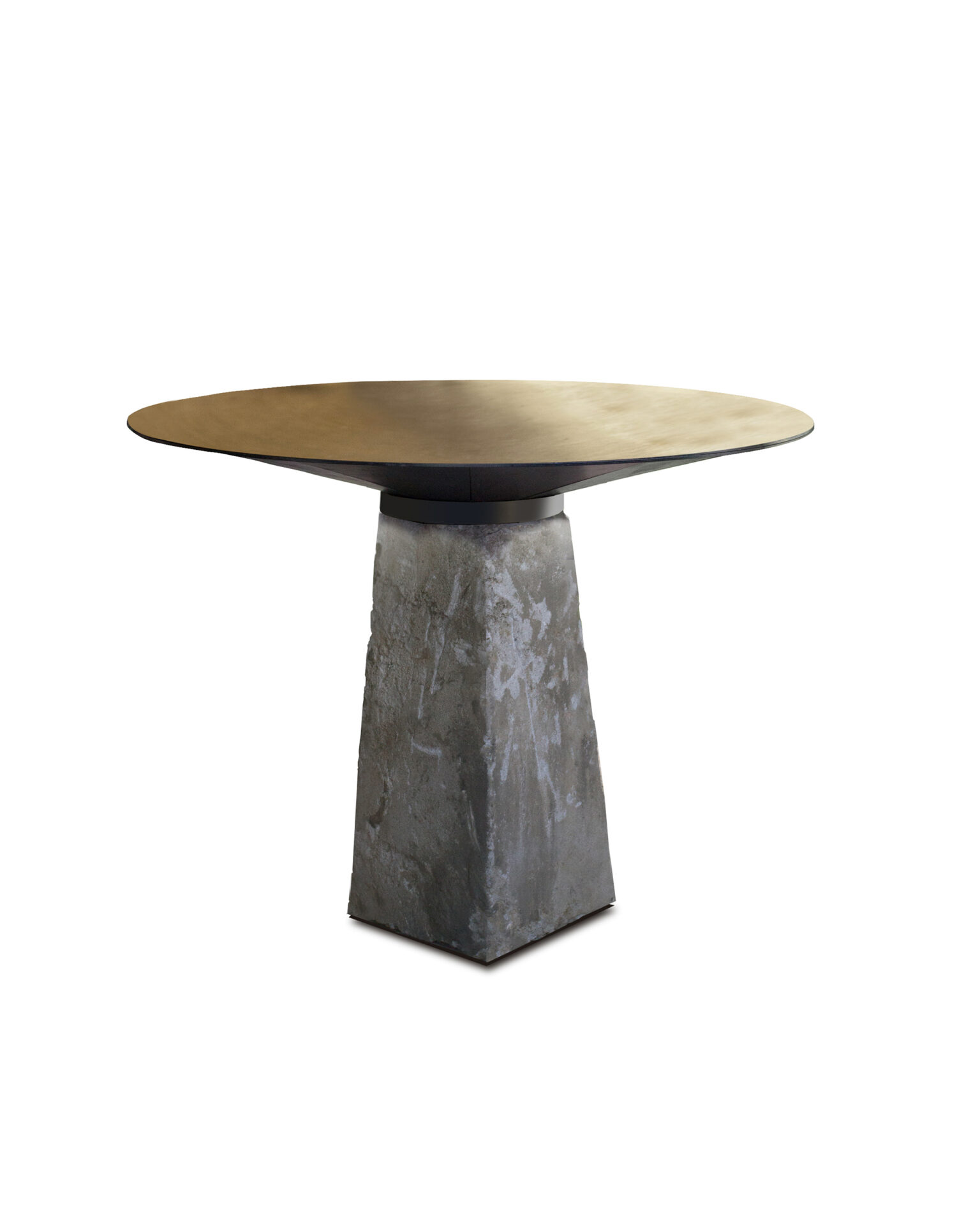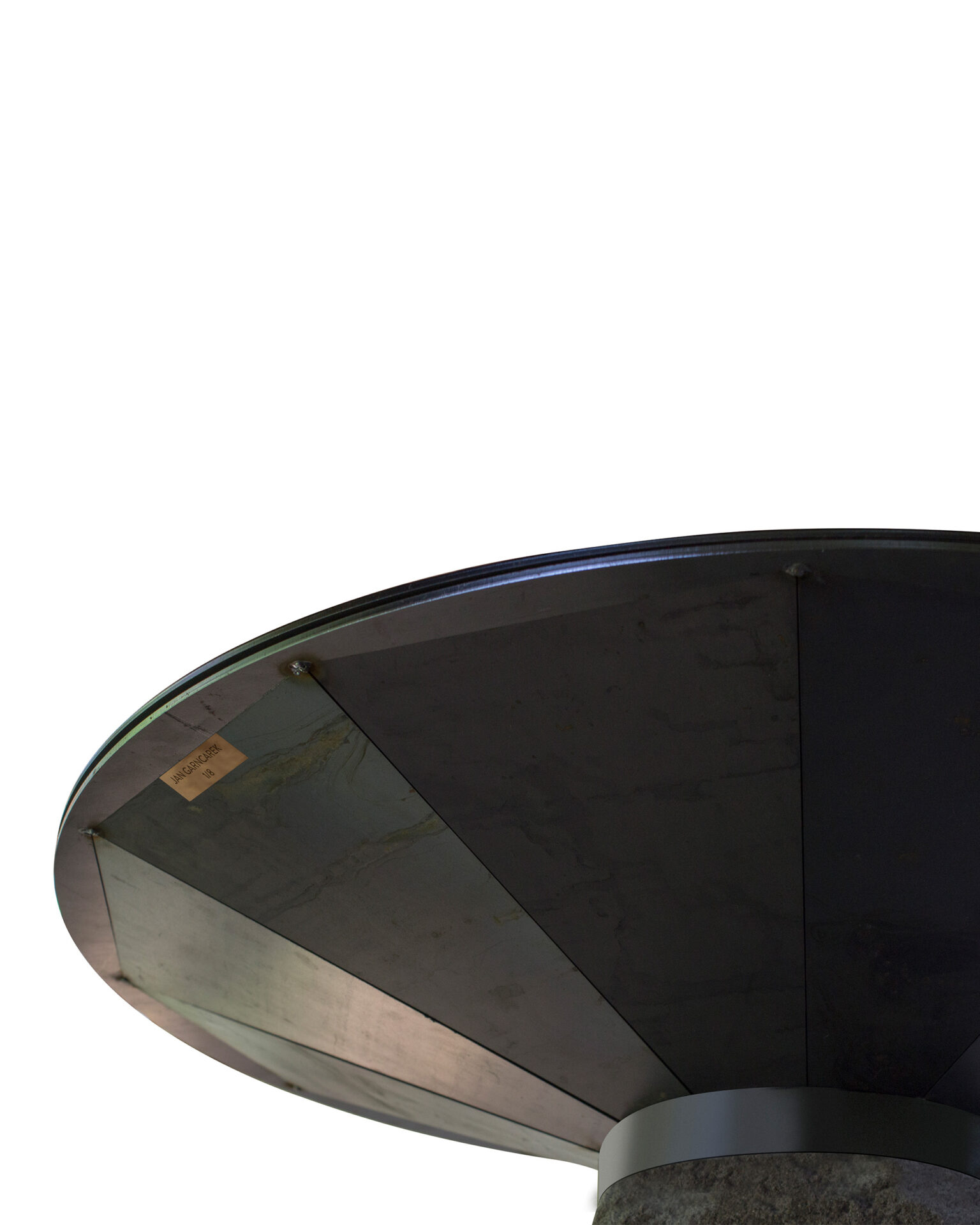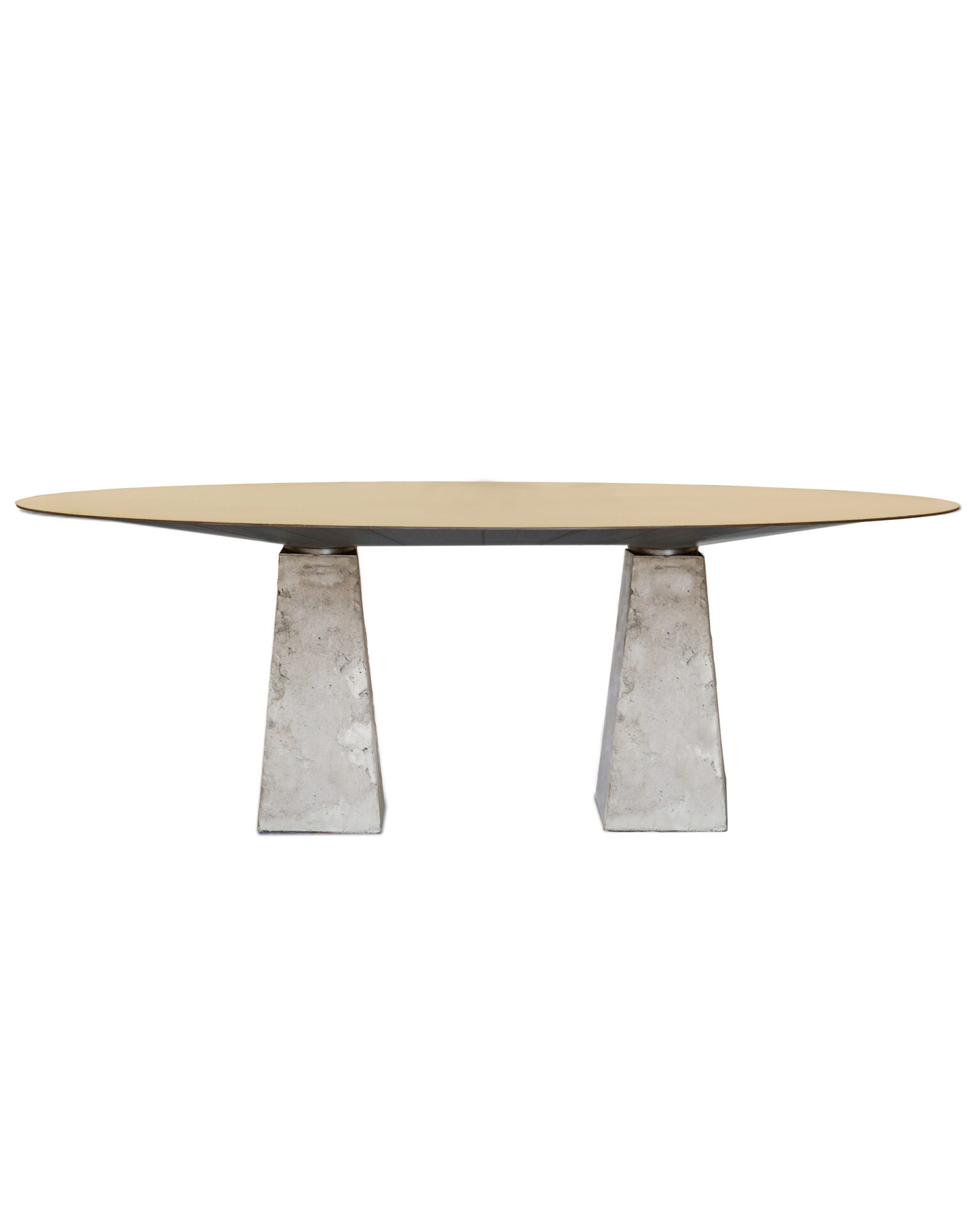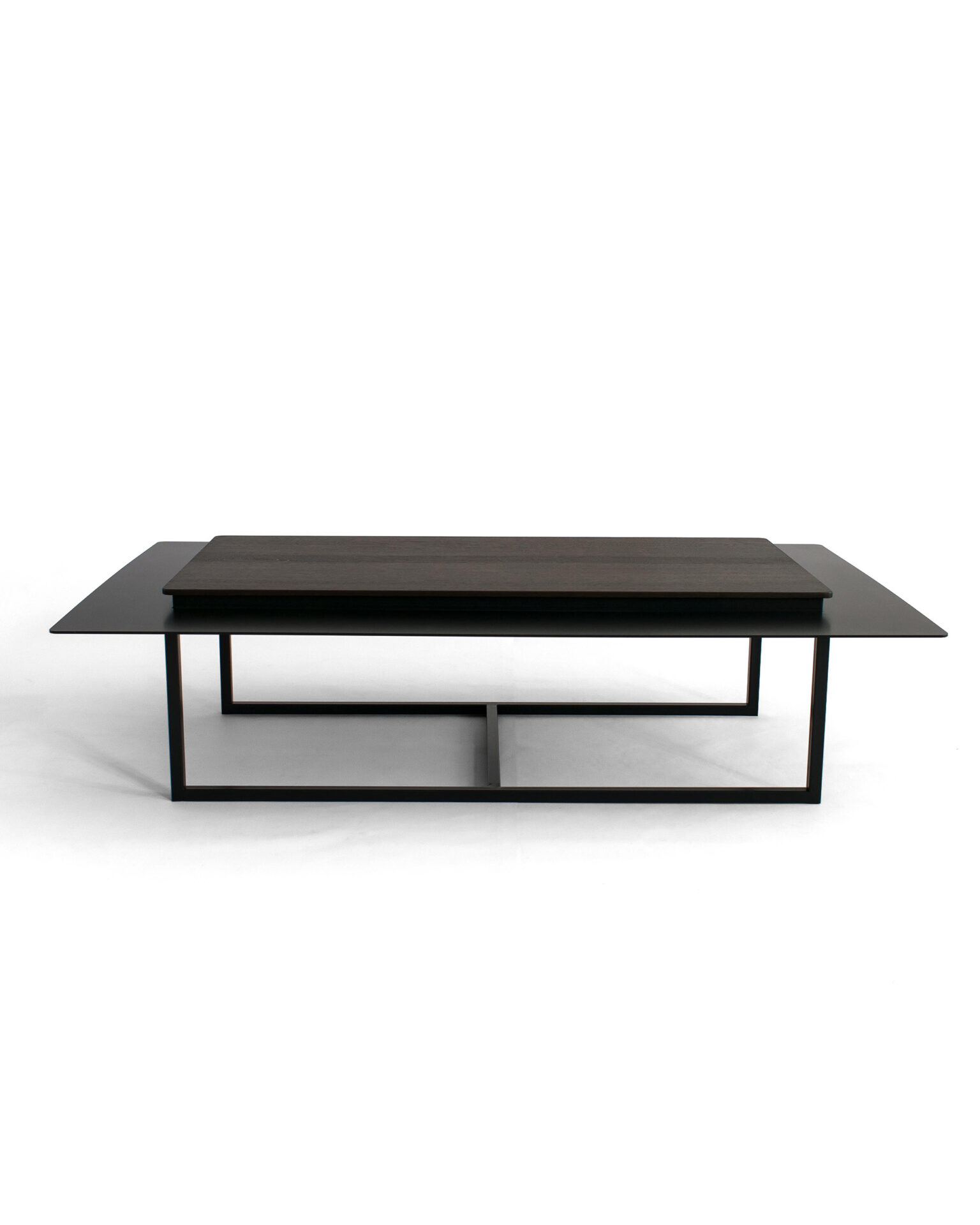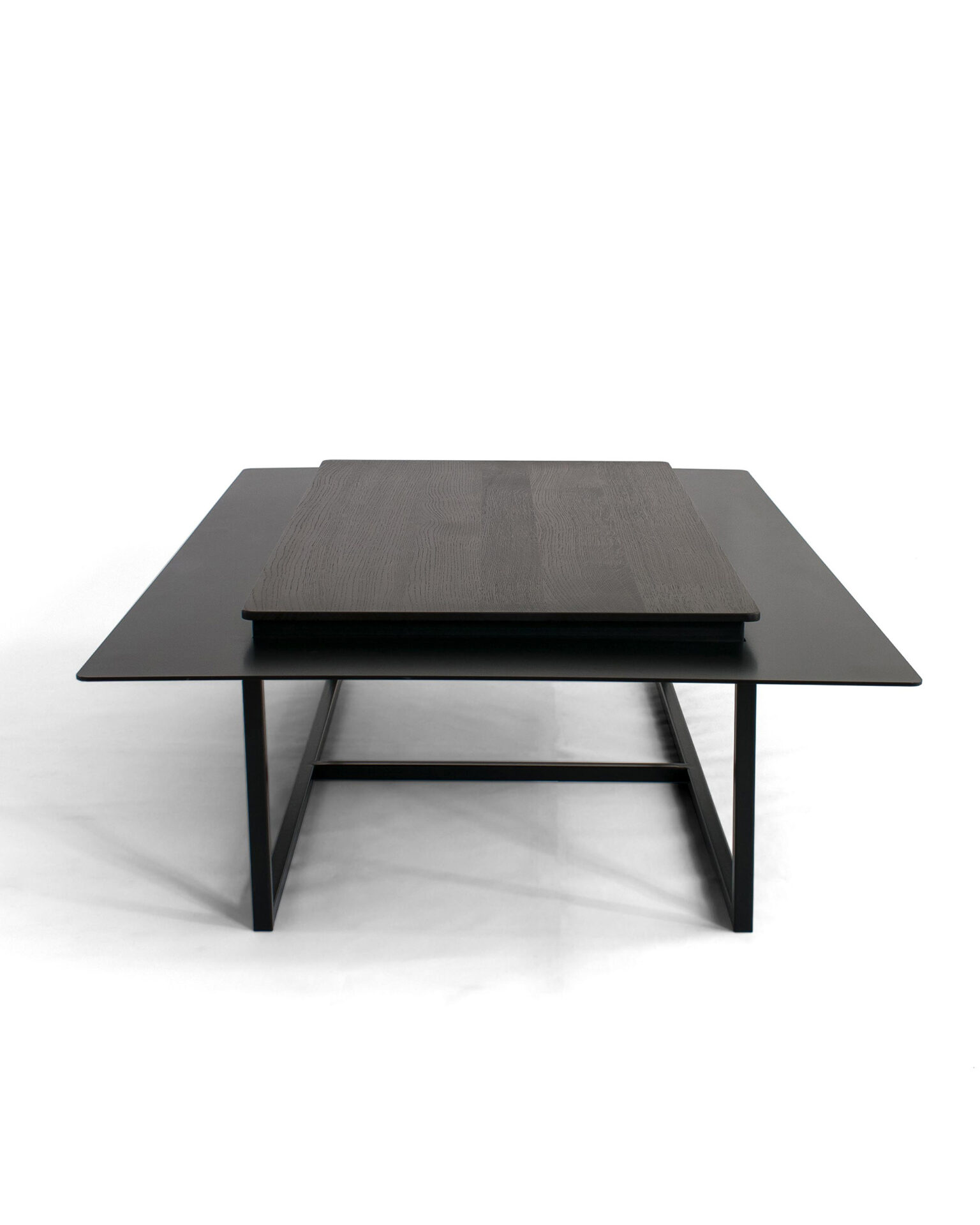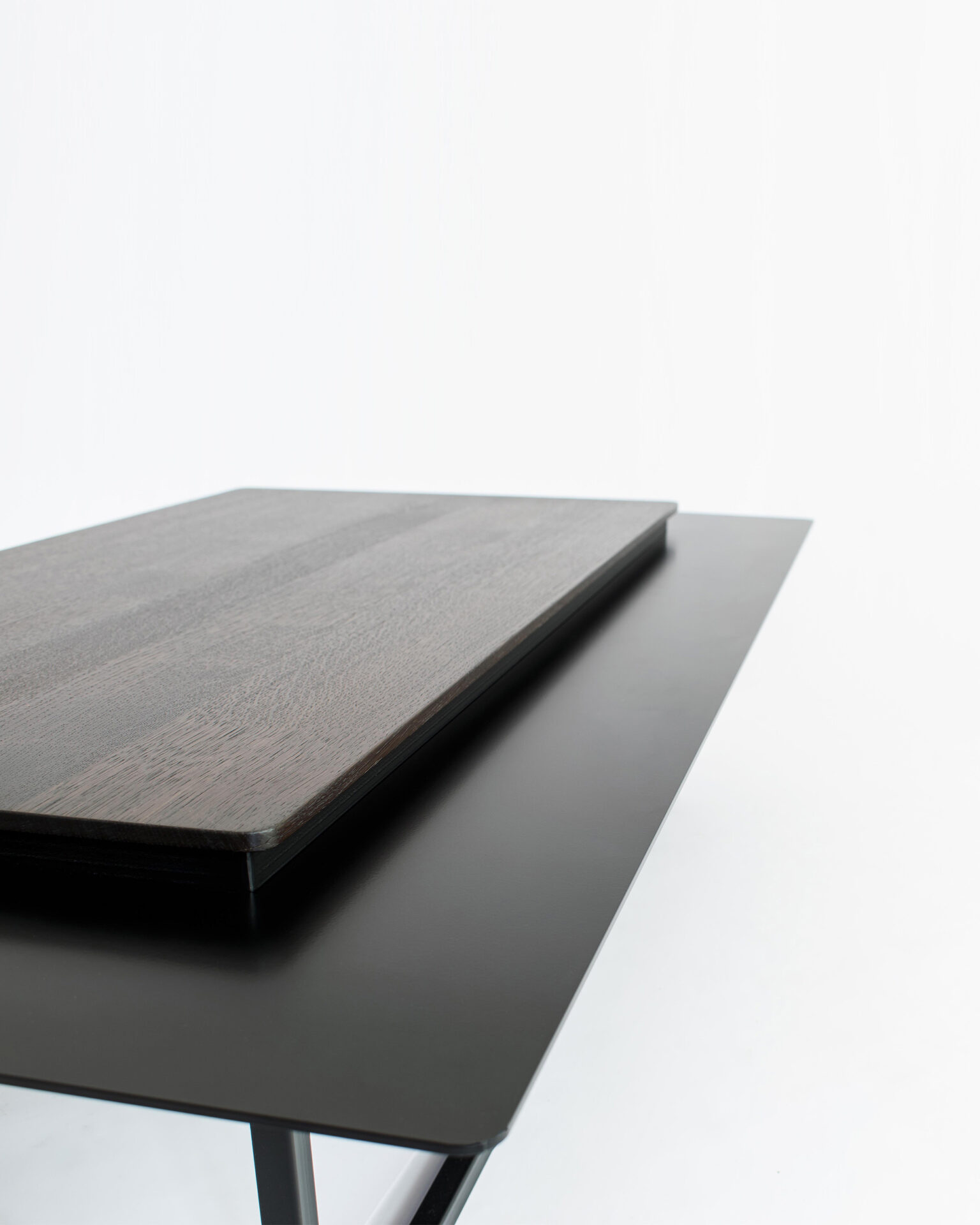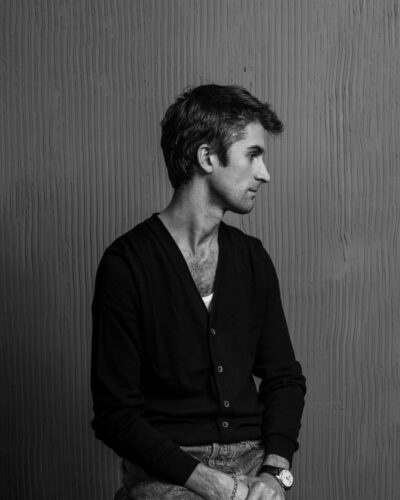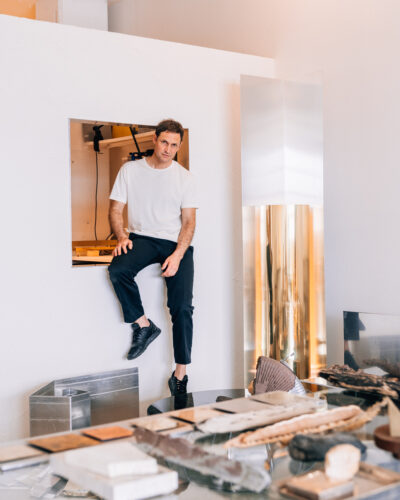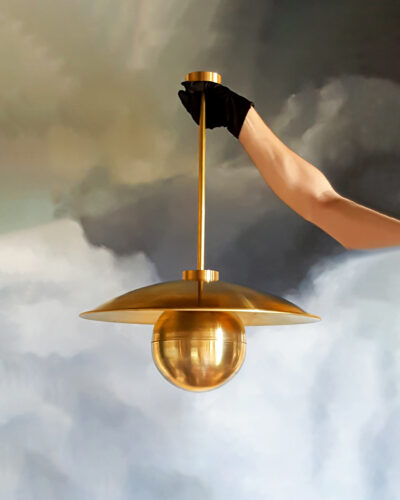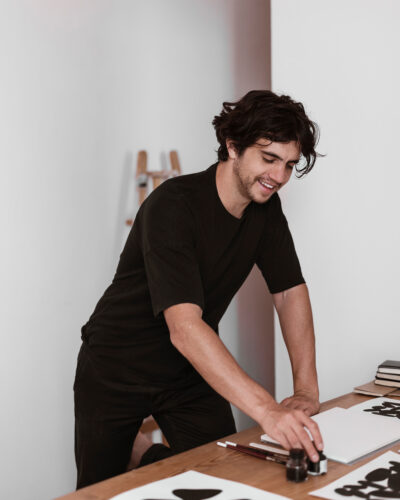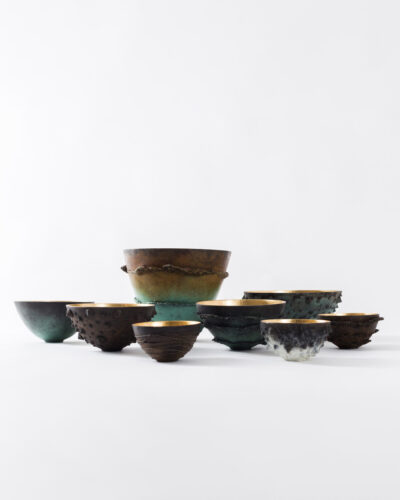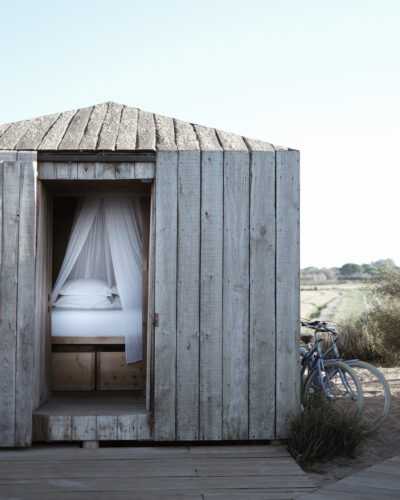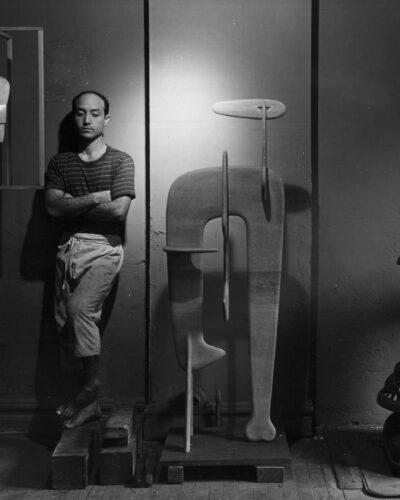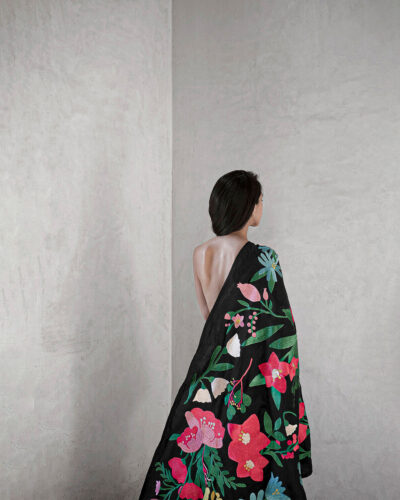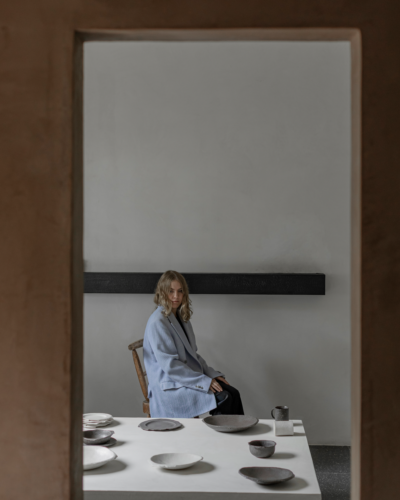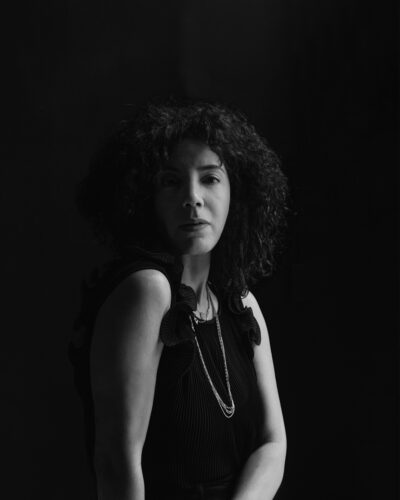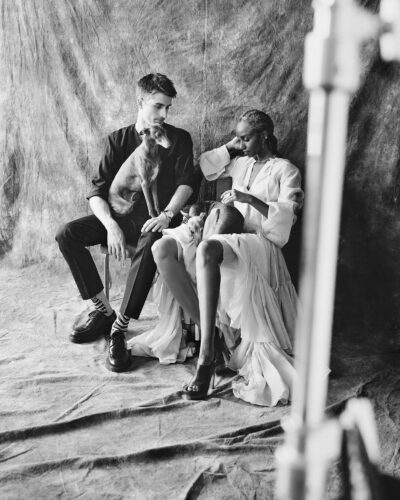This website uses cookies so that we can provide you with the best user experience possible. Cookie information is stored in your browser and performs functions such as recognising you when you return to our website and helping our team to understand which sections of the website you find most interesting and useful.
Listen to the conversation between Rosanna and Jan Garncarek.
From his eponymous design studio in Warsaw, Poland, Jan Garncarek creates objects that combine elegant pre-war aesthetics with a modern sensibility. Referring back to an era that was significant in Poland’s history of design, Garncarek cleverly avoids nostalgia or pastiche in his work – instead, he translates the refined sensibility of the pre-war aesthetic into new and pleasing forms.
“Poland has its own identity in terms of design – and its pre-war [design] identity was particularly strong,” notes Garncarek. In this era, between the 1920s and 40s, designers such as Józef Czajkowski and Wojciech Jastrzębowski worked to “create unique Polish designs based on Polish traditions – which was very successful during the 30s. But then the war came, and [the creative industries in Poland] significantly slowed down…”
Pared-back yet decadent, each design taps into the energy and elegance of this moment in time -when Modernism was gathering pace, and the Machine Age was just about to tip into the Atomic Age. Garncarek notes that during this time “design was very meticulous – in its details, its form, and how it was made. [Almost] everything was handcrafted, and so I am returning to this in my work -bringing handcrafted techniques back to life, using old methods of craftsmanship to make new designs.”
Each of the objects is made by hand – most often Garncarek’s own – yet an important element of the studio’s work is to learn from Poland’s specialist artisans and craftsmen. Sharing a lifetime of experience and expertise, the work with these craftsmen is vital, “because many of them are very old now, and so we are trying to learn as much as possible from them in order to develop and preserve these techniques in our studio in Warsaw.”
Brass is one material that Garncarek continues to study, learning old techniques and methods for handling and manipulating this metal – the gold-toned alloy of copper and zinc. Plentiful throughout the designer’s oeuvre, brass has an innate sense of luxury and lustre. “It is very plastic, so it gives a lot of possibilities. It’s easy to work with, and it’s very nice to create various shapes in this material. Thanks to this, we can easily show different geometries and shapes in brass.”
The Metropolis Lamp exemplifies Garncarek’s ability and affinity for brass; curved, spherical elements are crafted using the highly-complex process of metal spinning to give a thin, smooth silhouette and a subtle dappled effect. Like a sun eclipsed high above the city skyline, ambient light spreads across the curved brass surface, accentuating its form with a warm, celestial glow. The levity and texture of the curved dishes are contrasted with a solid brass base that has a heavy, symmetrical, mechanical feel. Inspired by the 1927 sci-fi film of the same name – Fritz Lang’s ‘Metropolis’ – the design recalls the architecture of the 20s and 30s, as well as the atmosphere of this pioneering piece of cinema. As a designer and maker, Garncarek notes that he was, “Always fascinated by the possibilities of brass, and so I designed The Metropolis lamp to mix the various technologies and methods together in one piece.”
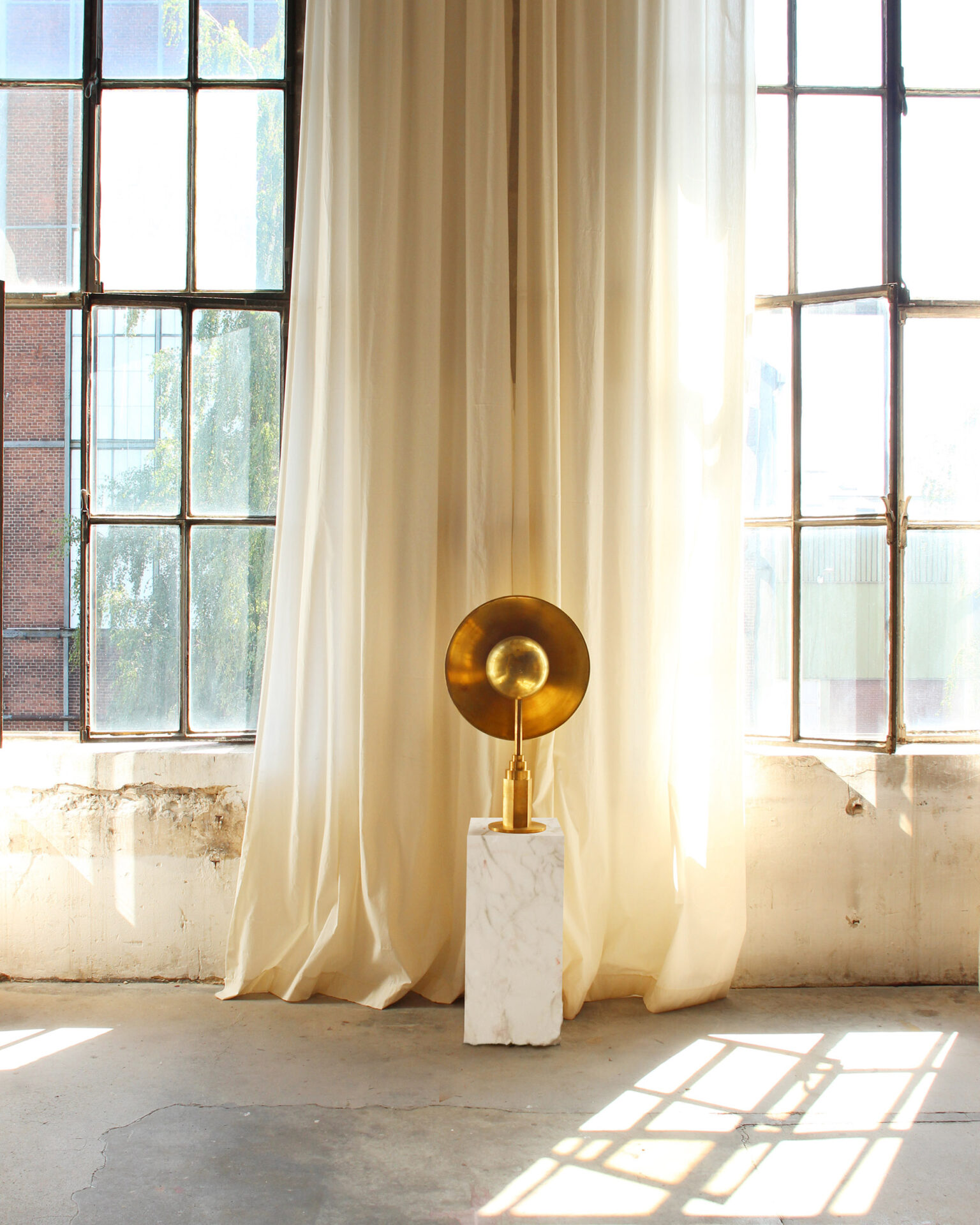
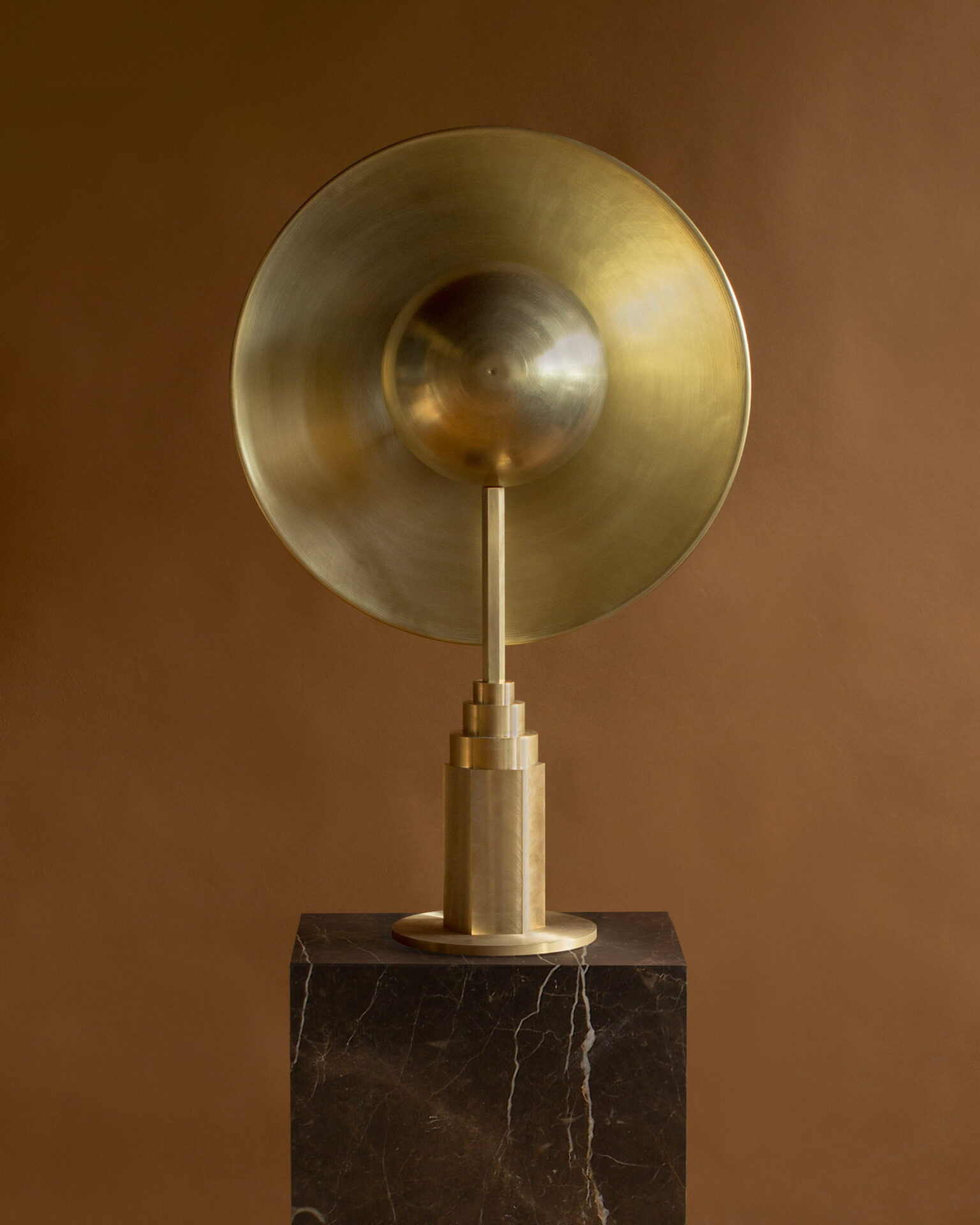
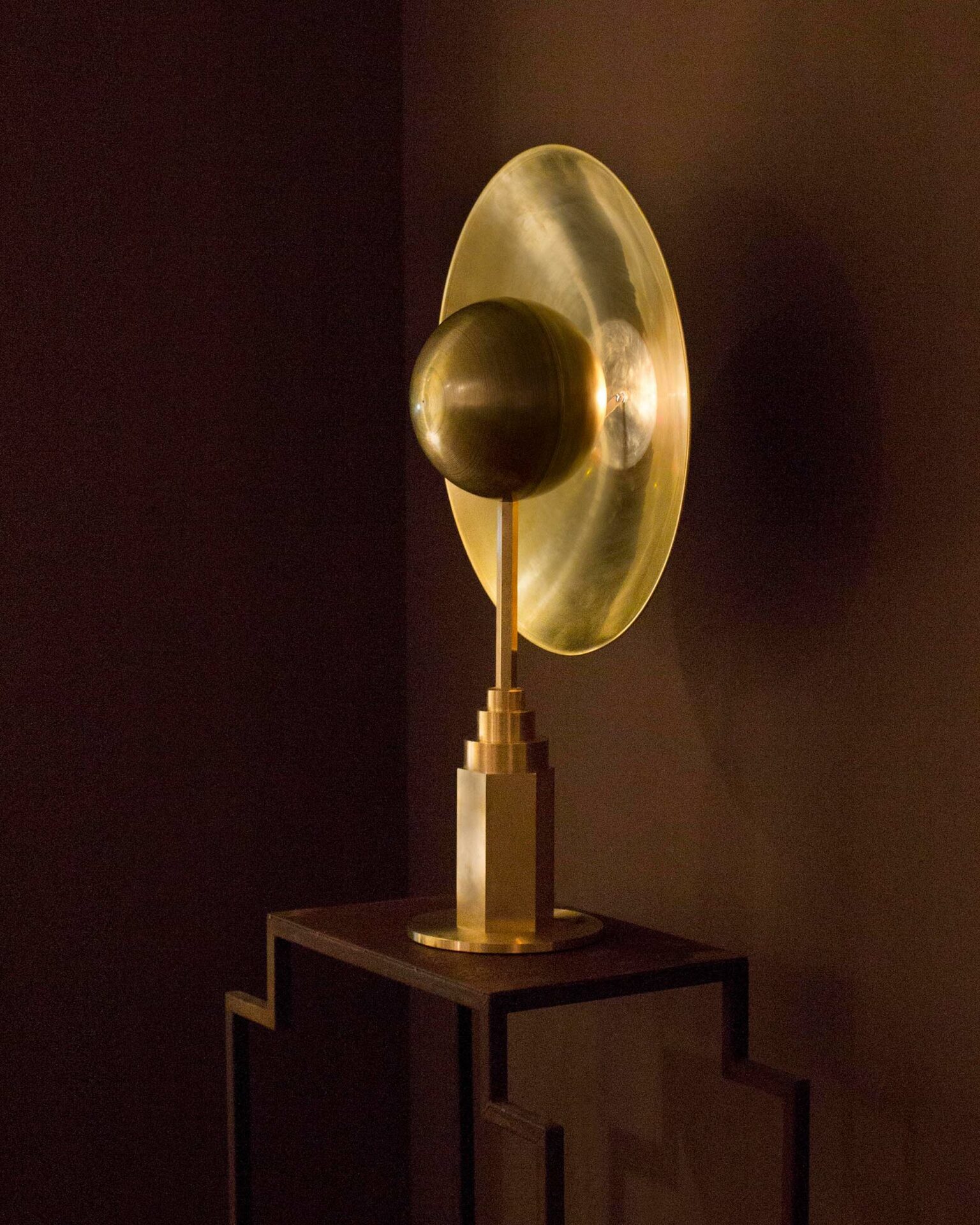
The impulse to revive bygone methods of making extends to a more general appreciation for the romance of times past, for the things we leave behind. The CBS series, for example, uses vintage concrete that once formed a balustrade between the designer’s home and that of his neighbour.
“This is a very unique project: this concrete was about to disappear from my immediate surroundings, and so I decided to bring it back to life. I live in a pre-war home in Warsaw that somehow wasn’t destroyed in the second world war – and it is a great source of inspiration for me, so I decided to buy the concrete from my neighbour to use in my work.”
This concrete is shaped into a series of monolithic bases – and the vintage material carries a very particular sense of weight and history. The cool, grey surface is striated like stone or marble, its markings reminiscent of both the natural world and urban spaces. The raw beauty of the concrete is crowned with a gleaming brass tabletop, and the two elements are joined by a steel construction that fans upwards and outwards from the top of the base. A subtle intervention that dramatically alters the silhouette, this third element creates volume and complexity, bringing an overall sense of balance.
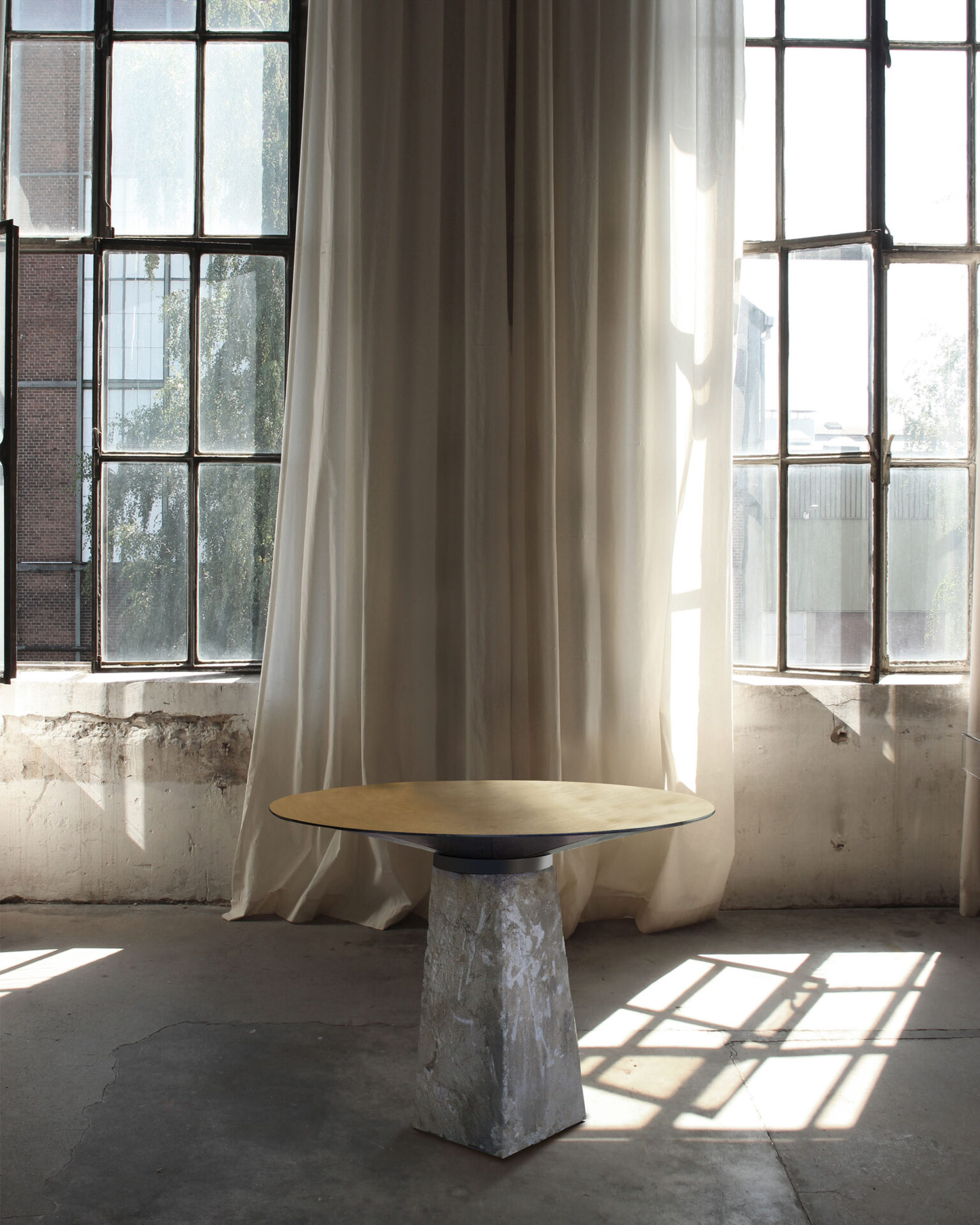
Combining materials in thoughtful and poetic ways, Garncarek’s designs work in harmony rather than in contrast – and so variations in texture, colour and weight are approached with subtlety. The Tungen Table is all-black, with a slim, modern profile made in metal and stone. The black stone floats above the metal surface below – a raised platform or podium reserved for objects of ‘elevated’ status – whilst the generous metal border offers itself for more practical purposes. “What I have observed is the diversity of levels on which we can meet around the table, or on the table. The objects that are on a table can be divided into two categories: things that are decorative and things that are useful, and the Tungen simply separates them from one another.”
Function does not submit to form, as Garncarek gives great consideration as to how we might use each piece – how we might interact with its size, shape and surfaces. “It’s very interesting for us to observe how brass gets a patina as it ages. This patina shows how people use these objects over time: some parts are washed with human touch, and others are left almost totally untouched.”
Each piece is a culmination of shared histories and personal experiences, past techniques and present-day practicalities, and Garncarek finds subtle and beautiful ways to incorporate the past into the contemporary. Possessing something of the uncanny – that vague yet comforting sense of familiarity – Jan Garncarek does not prescribe to the Modernist maxim of ‘the shock of the new’ -instead, he provokes a sense of home, creating objects that are meant to be well-loved, used time and time again.
